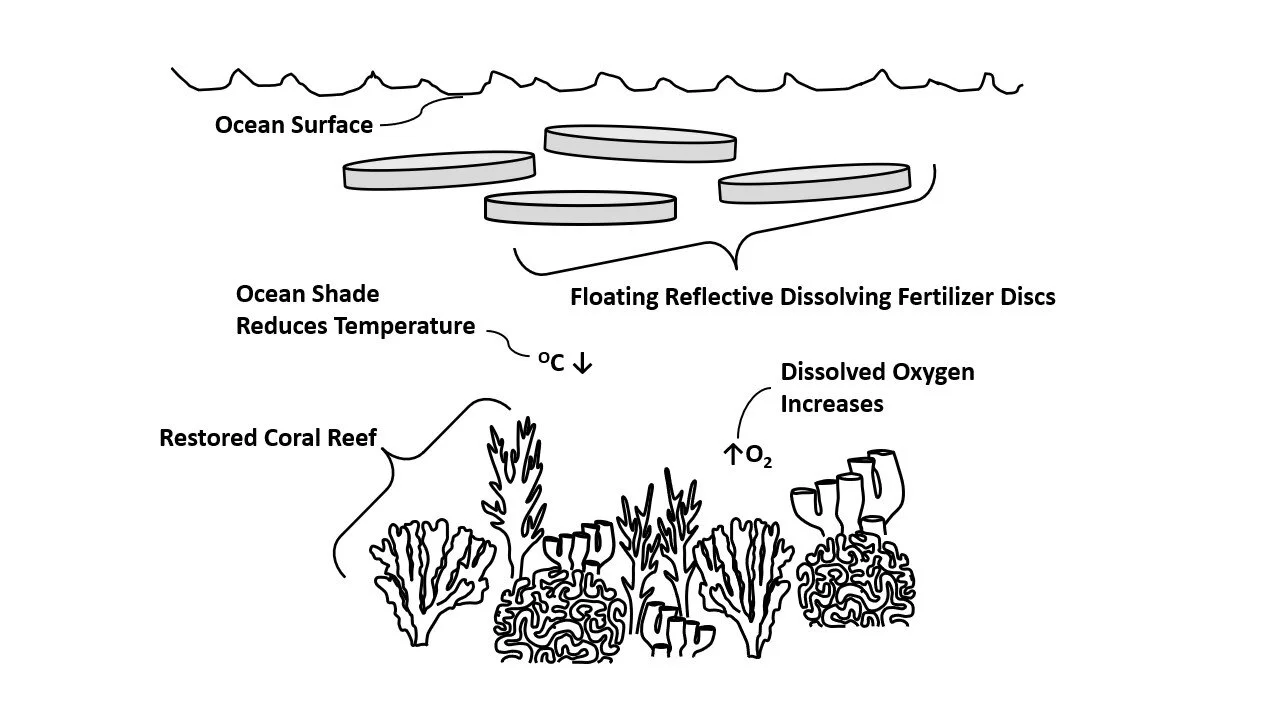Two Important Concepts
Solar reflector biopolymer (Fishery cooling disks)
Greening the seas with Floating-Sand™, an Iron coated marine fertilizer of 55 to 70 microns

Microscopic picture of earth-ice in light and dark field.
Diatoms digest iron coated sand to feed and shade the oceans
The solution starts with these small balls measured at around 60 microns. They contain minerals that help diatoms grow.
Diatoms are a major group of algae that can be found in oceans and soils from across the world.
When diatoms eventually die, they sink, taking the carbon in their bodies down to the bottom of the ocean. By promoting the growth of diatoms, Earth Ice not only provides more food for other ocean life, it also helps remove carbon from the environment.
A visual representation of how the disks will work in the ocean

Where to Cool
Importantly, artificial ice does not quickly melt in warm waters, like natural ice does.
Unlike natural ice, which is restricted to the poles, artificial ice can be deployed in warm equatorial waters, where there is more direct sunlight.
This means that our artificial ice can be much more effective at reflecting solar light than the natural ice at the poles.
The artificial ice material also provides shade to the water beneath it, which helps cool any body of water.
Cooler water can hold more dissolved oxygen. This dissolved oxygen is what fish breathe, so decreasing ocean temperatures would lead to an increase in fish populations and larger fish.

What we need right now
More fishes and clean food
Boost clam and oyster production
Enable fishery biodiversity
Reverse Ocean desertification
STOP AND REVERSE GLOBAL WARMING!





